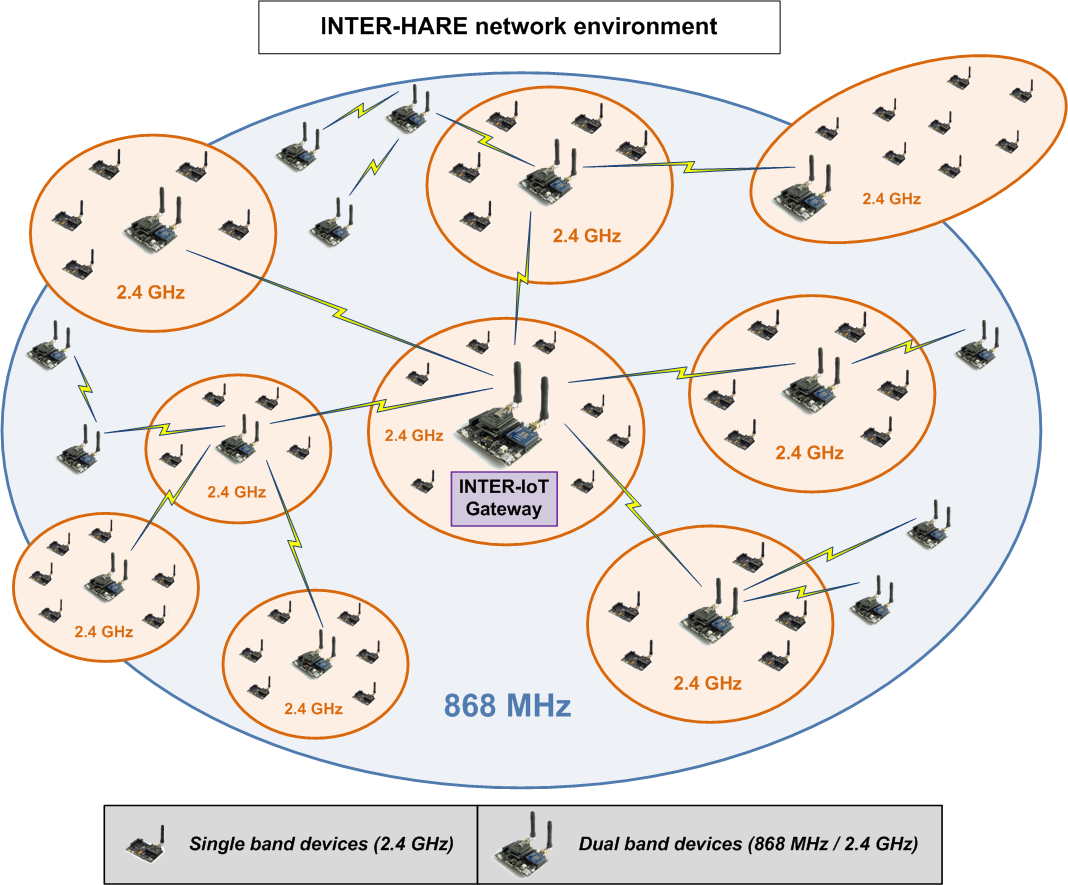Concept and objectives
The continuous emergence of new technologies based on the IoT paradigm has resulted in a heterogeneous ecosystem. The proposed INTER-HARE platform will create synergies between LPLANs and LPWANs, by building and testing an IoT platform easily scalable (both in coverage range and devices) and flexible (both in the considered use cases and the frequency bands from employed devices). Interoperability is provided by a hierarchical two-tier network, where dual-band devices simultaneously interact with end devices and the INTER-IoT gateway. INTER-HARE platform will allow in the mid-long term the deployment of advanced services based on sensor networks, from a wide range of everyday life applications, at reasonable costs, and low time-to-market.
The current proposal sets out to overcome the aforementioned issues by creating an IoT platform based on a cluster-tree network[1], where an LPWAN acts not only as data collector, but also as backhaul network for several so-called low-power local area networks (LPLANs), as shown in the figure below. The INTER-IoT gateway becomes then the central element of the LPWAN, with full vision of the whole platform, and entitling cluster-heads to manage their corresponding LPLAN in a hierarchic way.

Communication within both the LPWAN and the LPLANs is based on the HARE protocol stack[2], ensuring transmission reliability, low energy consumption by adopting uplink multi-hop communication, self-organization, and resilience. Under these premises, LPWAN boundaries are extended beyond typical 868 MHz coverage range and easily integrate devices coming from adjacent/overlapping 2.4 GHz LPLANs. Use of separated frequency bands in overlapping networks results in an overall reduction of interferences. Lastly, thanks to the hierarchic system proposed, scalability is enforced by a management based on subnetworking techniques.
[1] L.O. Varga. “Multi-hop Energy Harvesting Wireless Sensor Networks: routing and low duty-cycle link layer”. Tesis Doctoral. Université Grenoble Alpes. (2015)
[2] T. Adame, S. Barrachina-Muñoz, B. Bellalta, and A. Bel. “HARE: Supporting Efficient Uplink Multi-hop Communication in Self-Organizing LPWANs”. Sensors 18 (1), 115, 2018. http://www.mdpi.com/1424-8220/18/1/115
